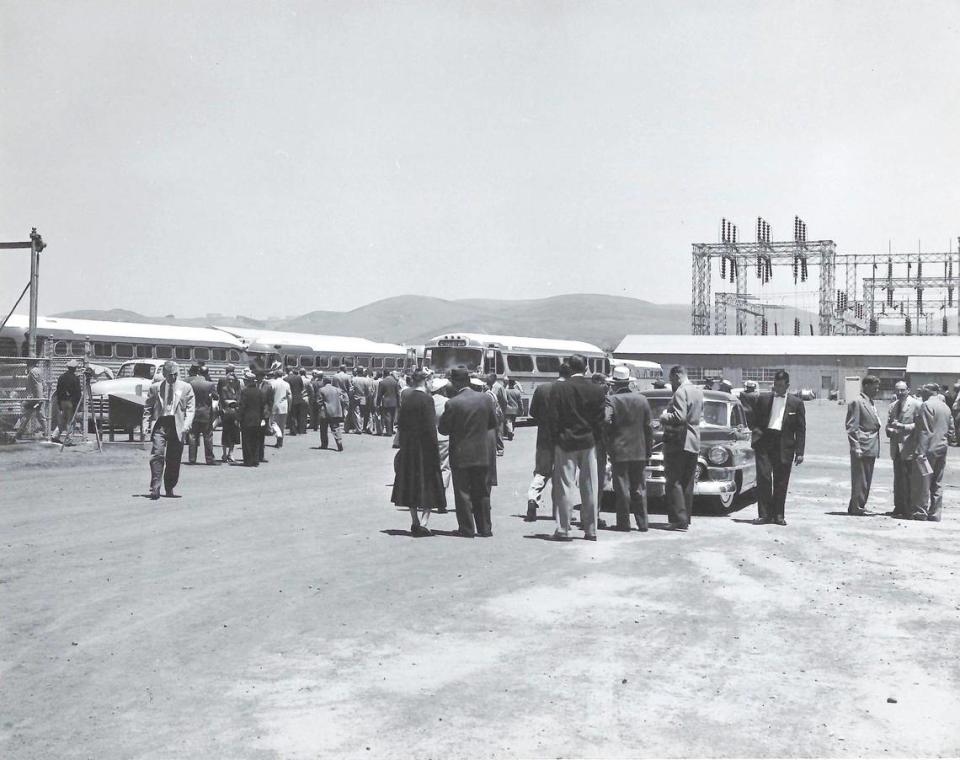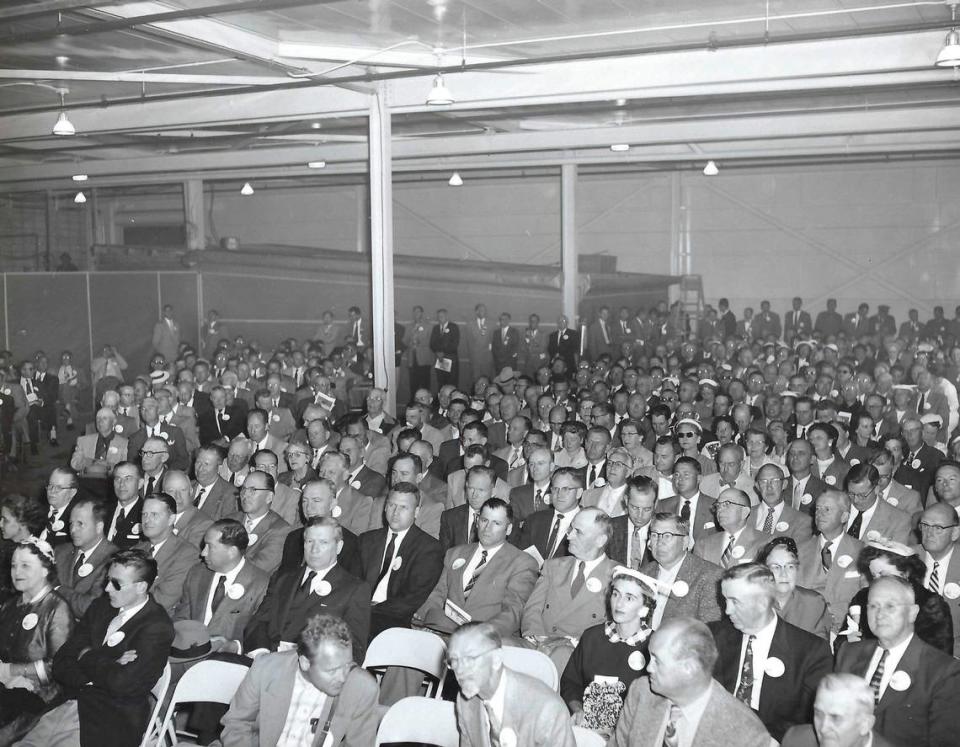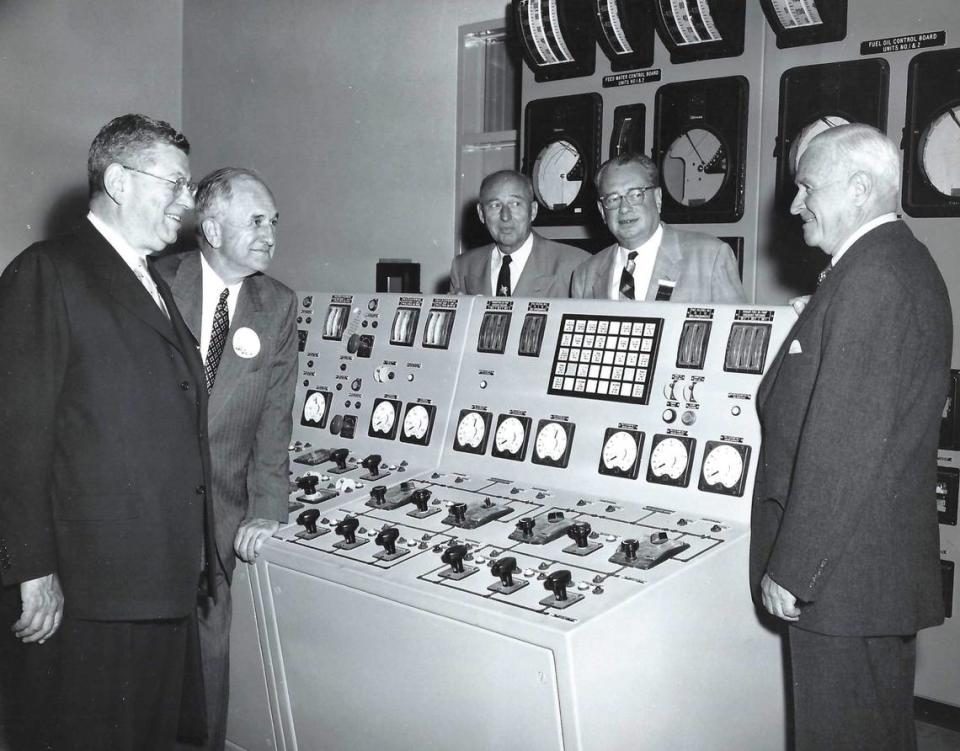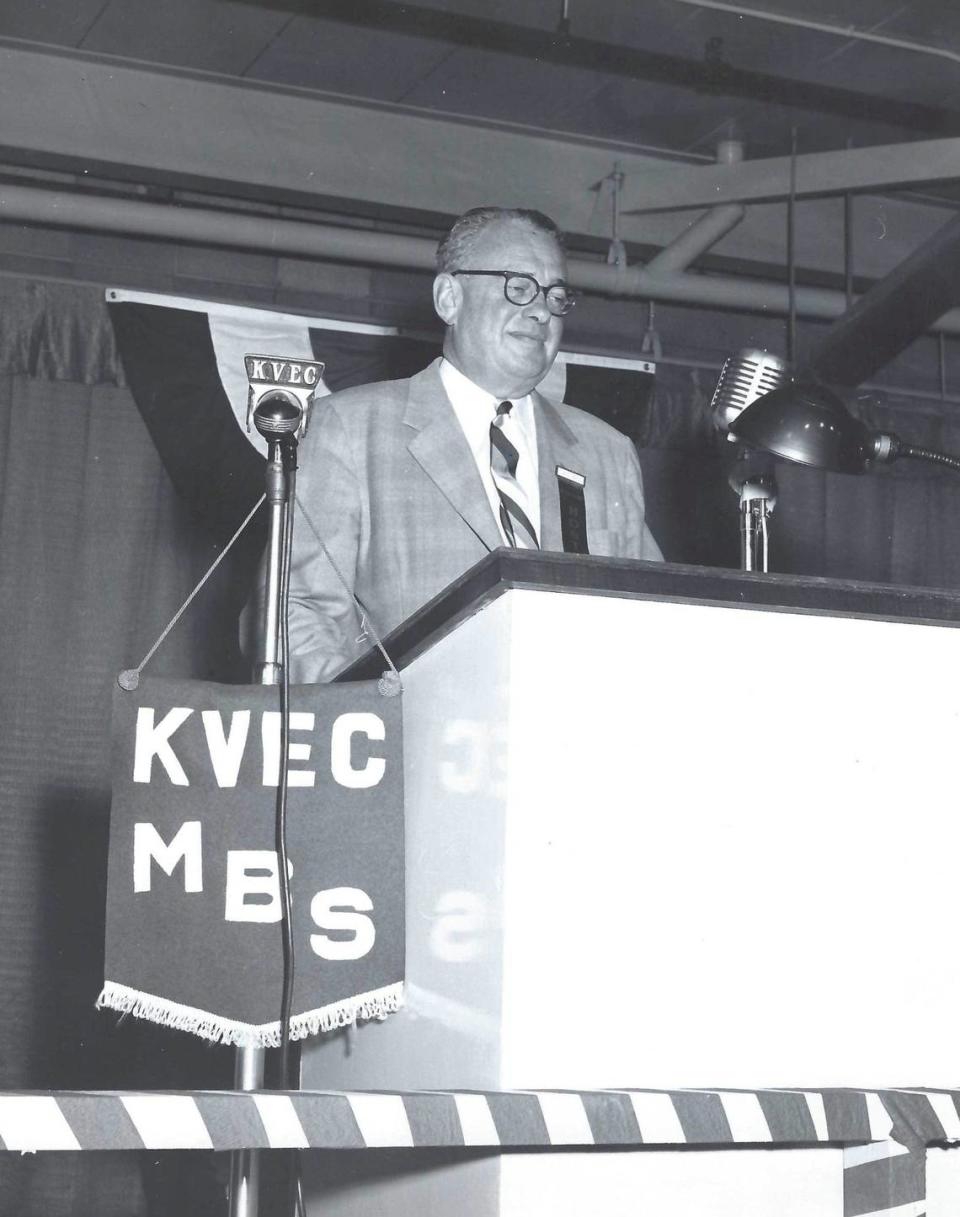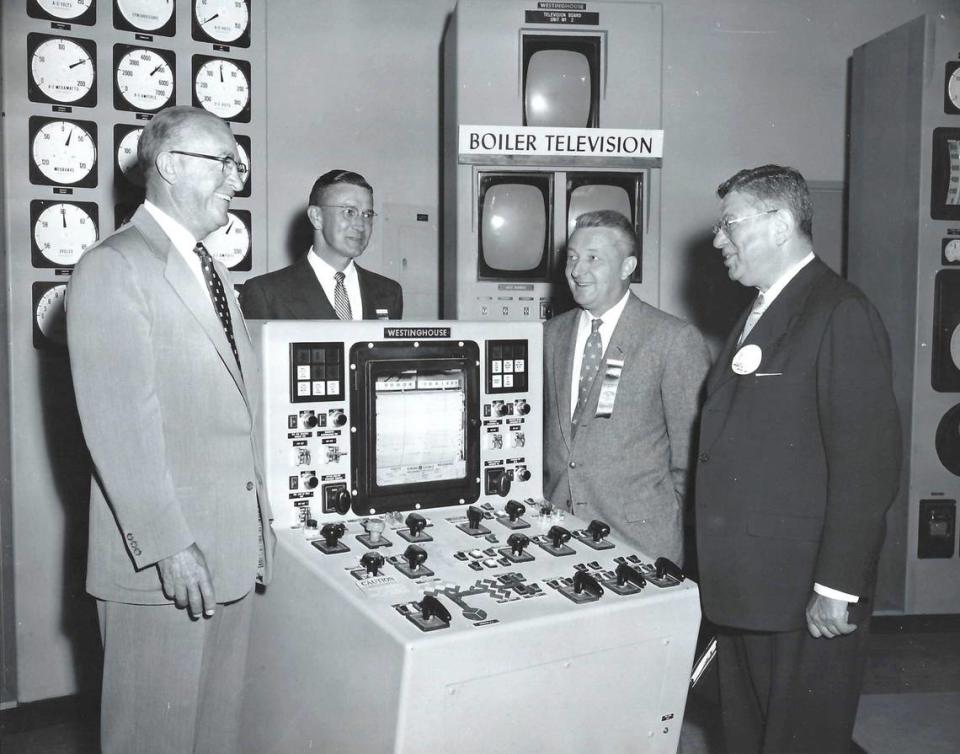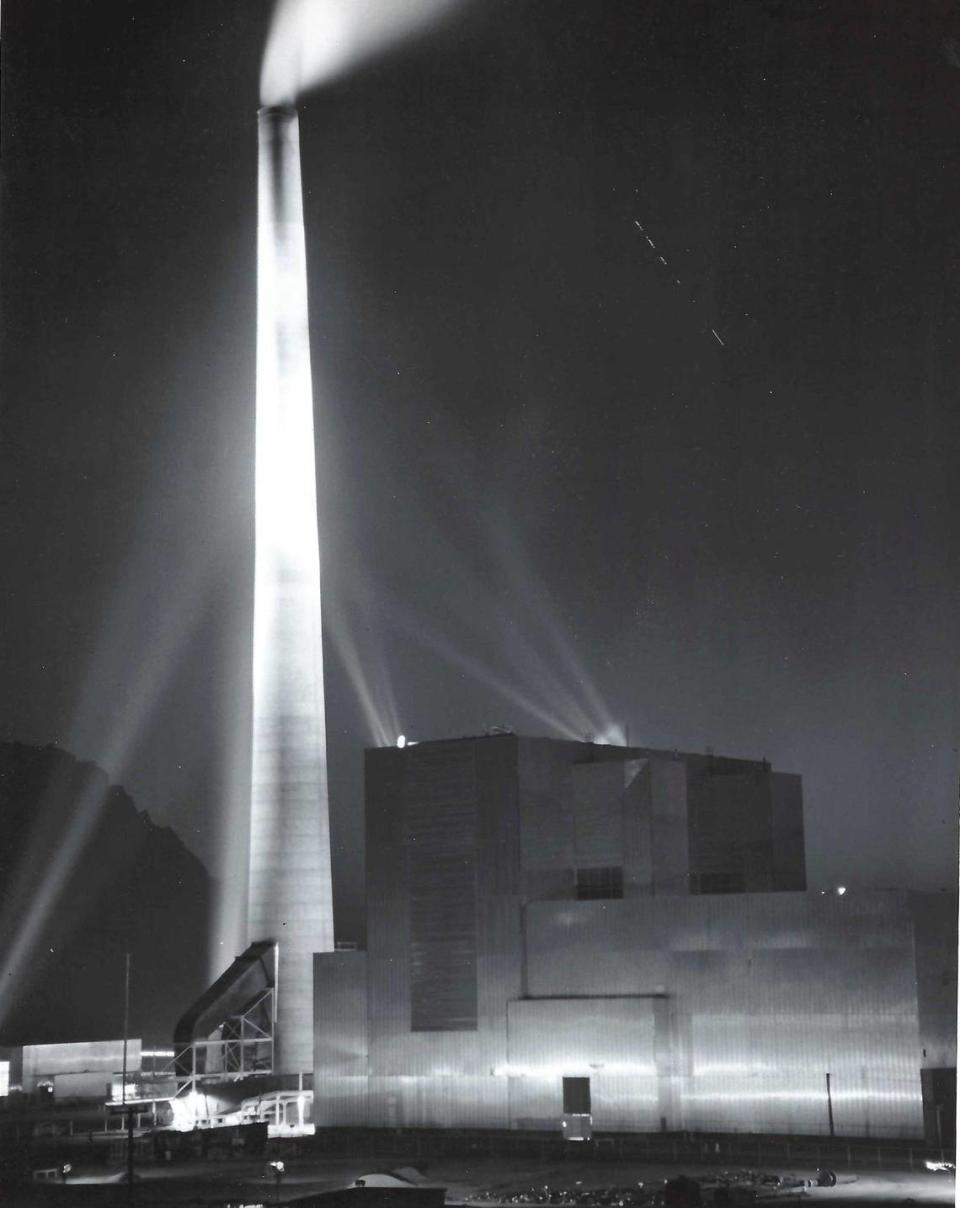What did Morro Bay Power Plant look like when first built? Surprise: There was only 1 stack
The first smoke stack in Morro Bay began scraping the sky 69 years ago.
Pacific Gas & Electric Company was building their 16th steam-electric plant — the sixth since World War II.
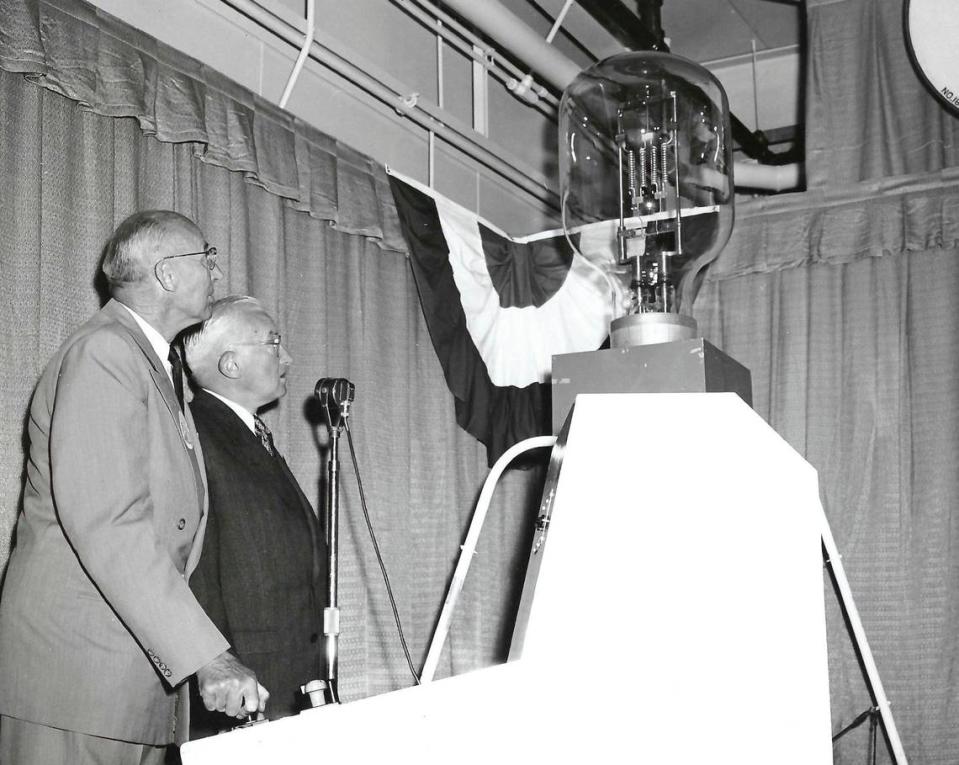
The plant was dedicated July 8, 1955, with speeches and the lighting of the “World’s Largest Lamp.”
The site is again in the news with a proposal by Vistra to build a 600 megawatt battery electric storage facility on the site of the former fossil fuel plant’s tank farm. The battery plant can store surplus generation from solar or wind power to release during peak demand.
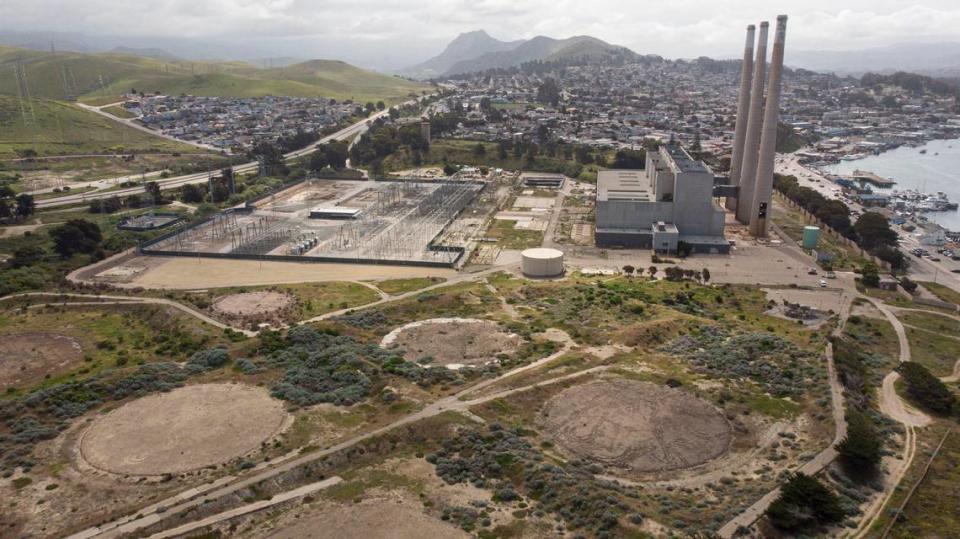
Local residents have voiced concerns over safety as the proposal moves through the city planning process. Vistra is also holding community outreach meetings.
The battery facility is designed to have more than half the power capacity of the defunct steam plant that in later years usually ran on natural gas, though there was an oil tank farm to fuel it as well.
Back in the 1950s, PG&E was in a desperate race to keep ahead of California’s explosive population growth and two units, at a cost of $44 million, would share the first smoke stack and generate 150 megawatts each.
Generating capacity would increase soon to a total of 1,002 MW with the addition of two more units, each with their own stack.
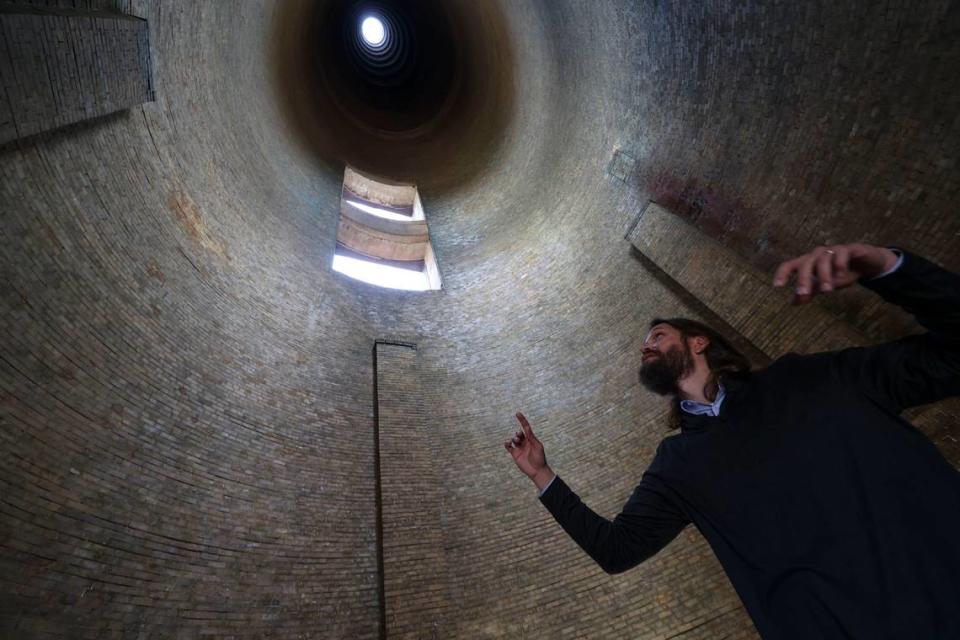
The steam plant was closed in 2014, the 59-year-old technology was no longer economical to operate.
And to be fair, how many 1955 electric devices still pull electrons today in the average home?
The Telegram-Tribune published a special 8-page section on the new plant on July 7, 1955, the day before it was dedicated.
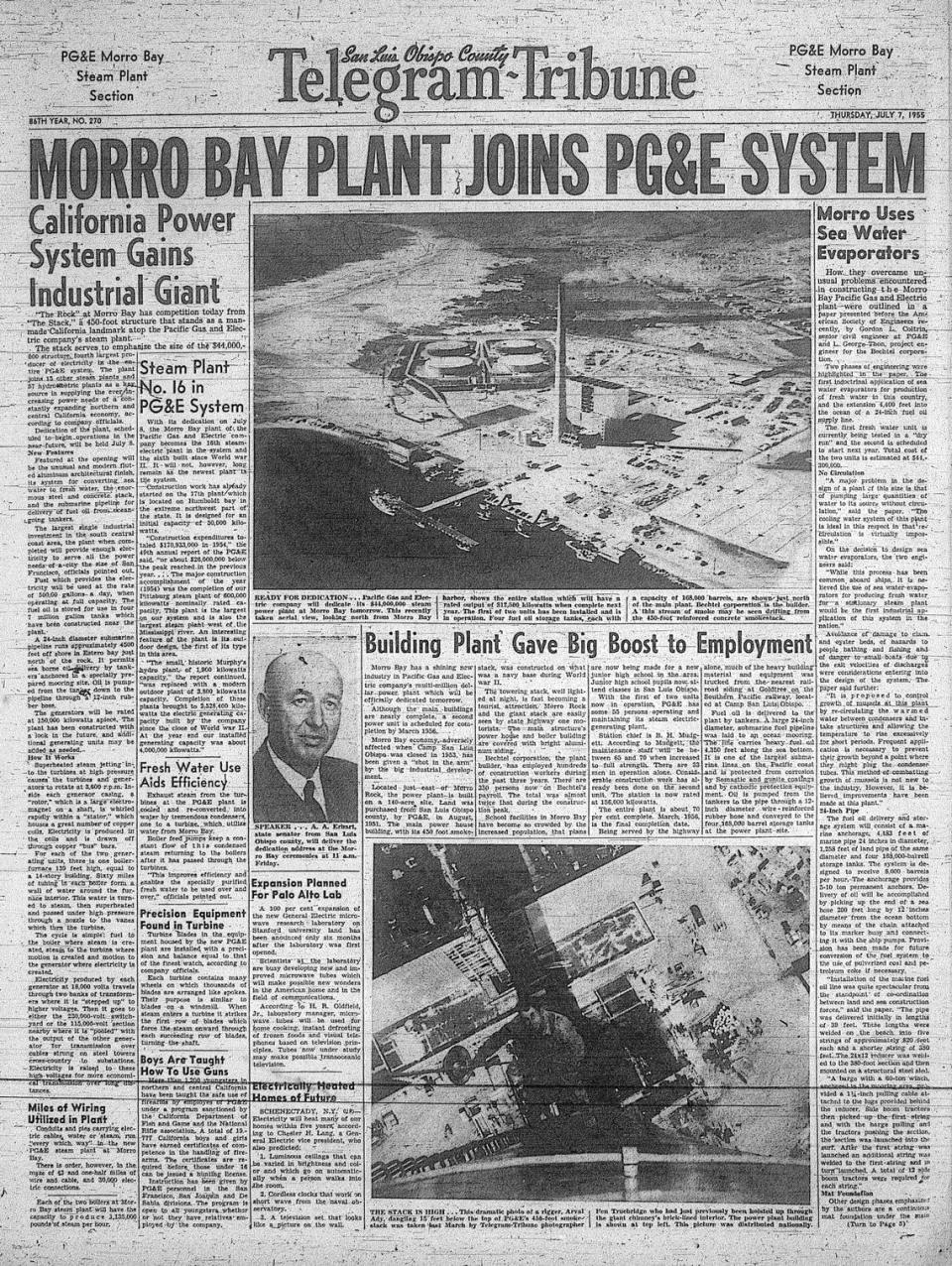
Morro Bay plant joins PG&E system: California power system gains industrial giant
“The Rock” at Morro Bay has competition today from “The Stack,” a 450-foot structure that stands as a man-made California landmark atop the Pacific Gas and Electric company’s steam plant.
The stack serves to emphasize the size of the $44,000,000 structure, fourth largest producer of electricity in the entire PG&E system.
The plant joins 15 other steam plants and 57 hydroelectric plants as a key source in supplying the ever increasing power needs of a constantly expanding northern and central California economy, according to company officials.
Dedication of the plant, scheduled to begin operations in the near future, will be held July 8.
New features
Featured at the opening will be the unusual and modern fluted aluminum architectural finish, its system for converting sea water to fresh water, the enormous steel and concrete stack, and the submarine pipeline for delivery of fuel oil from ocean-going tankers.
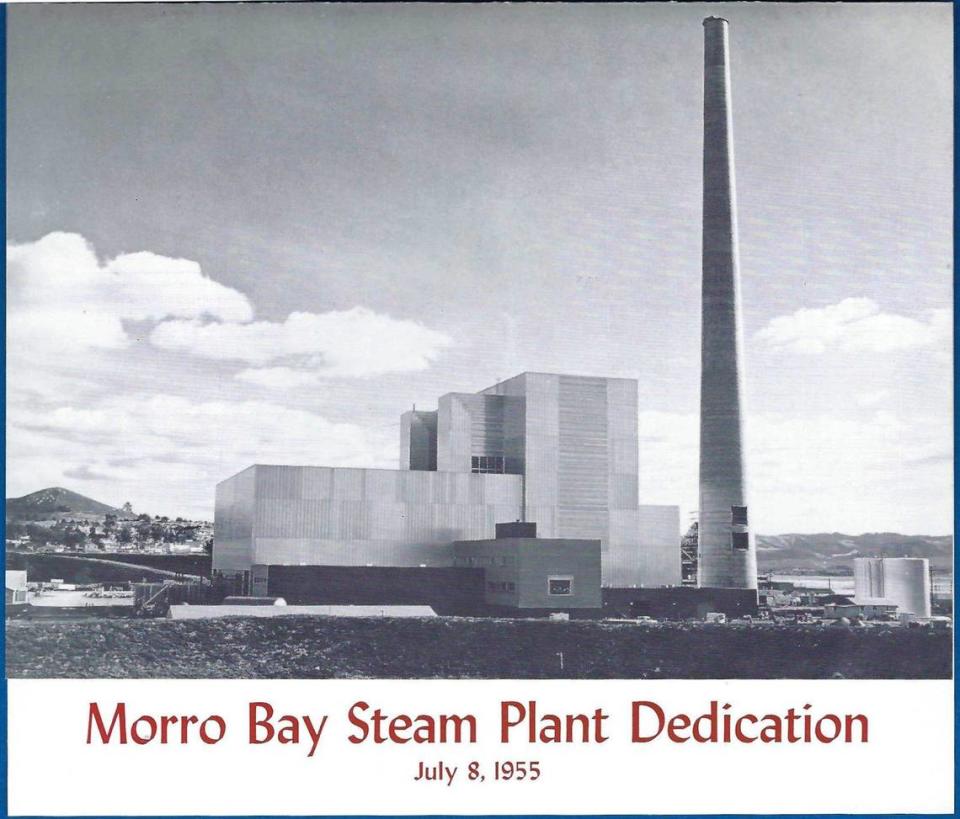
The largest single industrial investment in the south central coast area, the plant when completed will provide enough electricity to serve all the power needs of a city the size of San Francisco, officials pointed out.
Fuel which provides the electricity will be used at the rate of 50,000 gallons a day, when operating at full capacity. The fuel oil is stored for use in four 7 million gallon tanks which have been constructed near the plant.
A 24-inch diameter submarine pipeline runs approximately 4500 feet off shore in Estero Bay just north of the Rock. It permits sea borne oil delivery by tankers anchored in a specially prepared mooring site. Oil is pumped from the tanker down to the pipeline through a 12-inch rubber hose.
The generators will be rated at 150,00 kilowatts apiece. The plant has been constructed with a look in the future, and additional generating units may be added as needed.
How it works
Superheated steam jetting into the turbines at high pressure causes the turbines and generators to rotate at 3,600 RPM. Inside each generator casing, a “rotor,” which is a large electromagnet on a shaft, is whiled rapidly within a “stator,” which houses a great number of copper coils. Electricity is produced in the coils and is drawn off through copper “bus” bars.
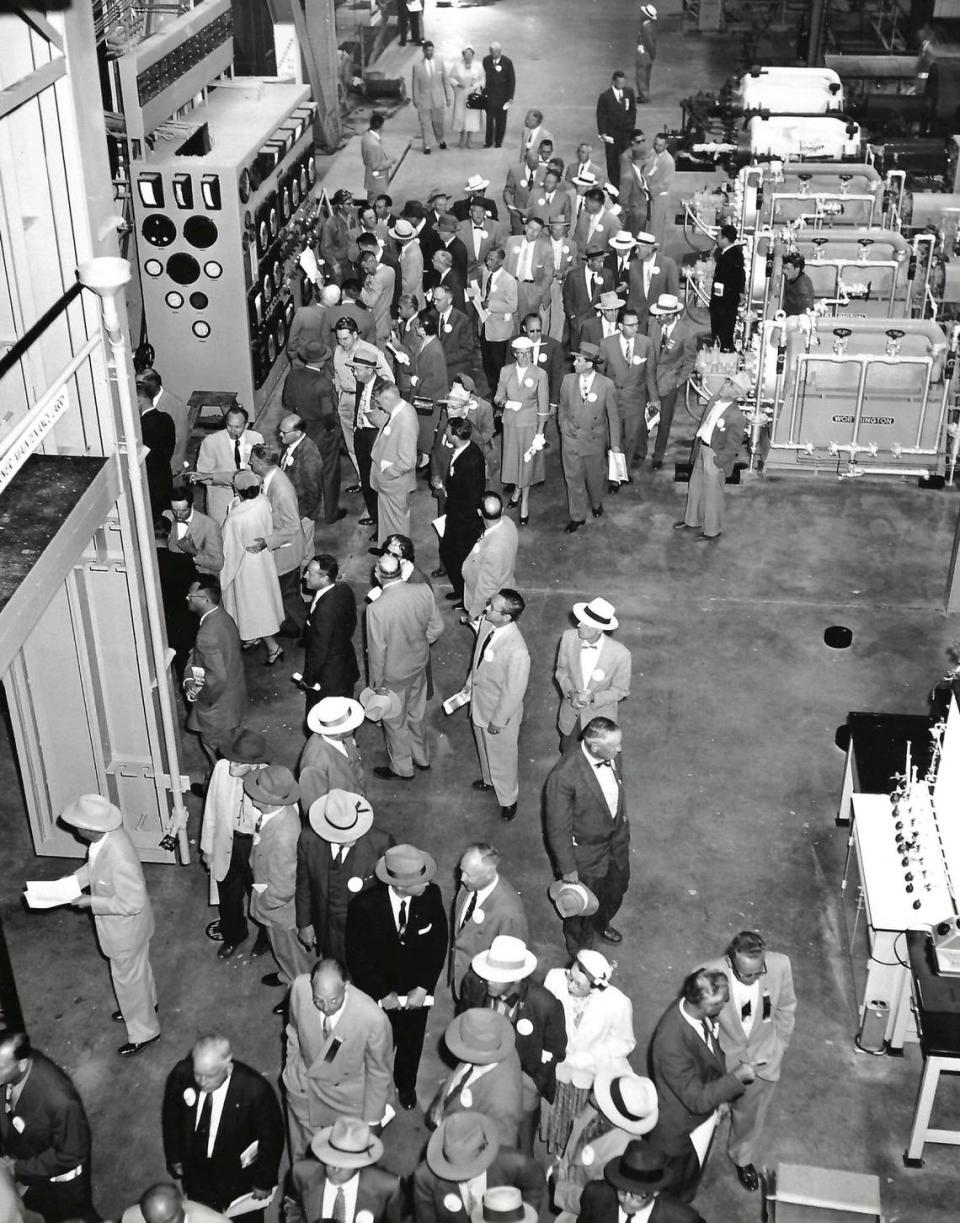
For each of the two generating units, there is one boiler-furnace 139 feet high, equal to a 14-story building. Sixty miles of tubing in each boiler form a wall of water around the furnace interior. This water is turned to steam, then superheated and passed under high pressure through a nozzle to the vanes which turn the turbine.
The cycle is simple: fuel to the boiler where steam is created, steam to the turbine where motion is created and motion to the generator where electricity is created.
Electricity produced by each generator at 18,000 volts travels through two banks of transformers where it is “stepped up” to higher voltages. Then it goes to either the 230,000-volt switchyard or the 150,000-volt section nearby where it is “pooled” with the output of the other generator for transmission over cables strung on steel towers cross-country to substations. Electricity is raised to these high voltages for more economical transmission over long distances.
